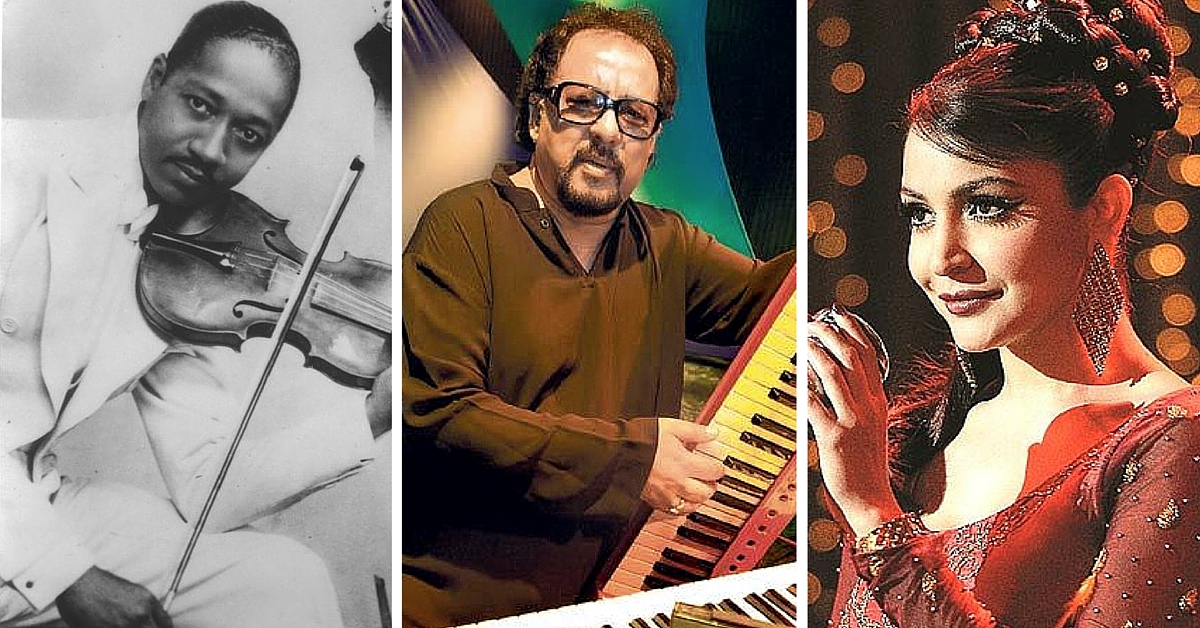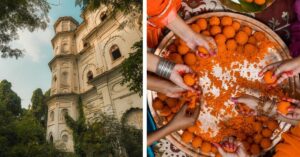Intl Jazz Day: How Indian Jazz Went From 1920s Bombay-Goan Flavour to Sitar and Beyond
On International Jazz Day, we celebrate the evolution of jazz in India, from elite clubs in 1920’s Bombay to a post-independence revival with Indian classical influences, to a modern day love for Indian jazz in the new millennium.

On International Jazz Day, we celebrate the evolution of jazz in India, from elite clubs in 1920’s Bombay to a post-independence revival with Indian classical influences, to a modern day love for Indian jazz in the new millennium.
Jazz has been an integral part of Indian music culture for decades. First brought in by Western influences in early 1920’s – an era of hats, suits, boots and cabarets – the erstwhile cities of Bombay and Calcutta harboured the new sounds. Jazz legends such as Leon Abbey, Roy Butler and Teddy Weatherford toured India, introducing the swings and beats of jazz to elite Indians, while entertaining foreigners posted in the country. In 1935, Leon Abbey brought a band to Bombay, which became a resident band. Soon, ballrooms and nightclubs became jazz hubs, where Europeans found a refuge from anti-colonial sentiments building up outside. Indian elites, aristocrats and other public servants also took to the high jazzy life, particularly at the Taj Mahal Hotel ballroom in Bombay.
Owing to their early exposure to Portuguese and European culture and their music, Goan and Anglo-Indian musicians dominated this era. The popular names then were Frank Fernand, Rudy Cotton, Chris Perry and Chic Chocolate.
After independence, as colonial habits fell away and there was a renewed sense of nationalism, jazz also took a new turn. First, it gradually found its way into the Bollywood industry. Goan musicians, with their roots in Western and jazz music, had a profound sense of orchestral arrangements and full scale music.
They assisted music director legends like Shankar Jaikishan, O. P. Nayyar, Laxmikant Pyarelal, and inevitably fused jazzy sounds with Indian arrangements.
Meanwhile, Chic Chocolate assisted C. Ramachandra to bring swing to Bollywood, through songs like Ina Mina Dika (Aasha, 1957) and Gore Gore (Samadhi, 1950).
Mike McCleary, a contemporary music director in Bollywood today, brings out the jazziness of these old hits from the 60’s and 70’s through his remixes.
Popular songs by McCleary include Khoya Khoya Chand and Hawa Hawai from Shaitaan, and this rendition of Ina Mina Dika, featured in Shaandaar.
Back in the 60’s, Chris Perry’s signature tunes can be noticed in the music for Kabhi Kabhi and Trishul. Frank Fernand is popular for Don, Zanjeer, Hera Pheri, Barsat and Victoria No. 203.
While jazz was influencing Bollywood, blending in easily with classical Indian music, Indo-jazz was also an emerging genre. The 1940’s was a great time of musical cultural exchange between Indian and the West, with The Beatles coming to India and Ravi Shankar gaining popularity worldwide.
Pioneered by Ravi Shankar, John Coltrane, John Mayer and John McLaughlin, Indo-jazz fused sax, guitar, bass and drums with tabla, sitar and the violin.
An Indian classical arrangement, with jazz-like improvisations characterised this genre.
Free jazz, a global anti-conventional form of jazz with influences from Arabic, Indian and African music, ensured that Indian sounds were heard around the world.
As the years went on, indo-jazz became prominent in India. It moved from elite entertainment in the 20’s to Bollywood influences in the 60’s and has become an independent music scene today in its own right.
Jazz and blues are celebrated more prominently through music festivals – Mahindra Blues Festival, Jazz Utsav, NCPA Jazz Festival, and many more – featuring both international jazz legends as well as Indian jazz artists.
One of the modern jazzists today is Louis Banks, born to a family of eight generations of musicians. Called the godfather of Indian jazz, the 75-year-old today is an icon in the jazz scene.
He started playing at the age of 13, and played with various bands from the 70’s. It was his stint with saxophonist Braz Gonsalves, in the Indo-Jazz Ensemble, that introduced a peculiar style to Indian jazz. Using ghatam and thavil, the band fused jazz rhythms with Indian classical sounds.
Today, his son, drummer Gino Banks, is one of the many young jazz cats leading the new generation of jazz in India.
The jazz scene today is not geographically limited. New age bands from Pune, Bengaluru, Delhi, Mumbai, Shillong, Kolkata and Goa have sprung up, each finding their own style and rhythm.
Besides Louis Banks, other big names in veteran Indian jazz today include Dhruv Ghanekar and Gary Lawyer, while contemporary artists include Ron Cha, Andrew Kanga, Anurag Naidu, Vinayak Pol, and more. It’s also not limited to an Indian jazz style, either. Elements of blues, bebop, swing, folk, Latin are all incorporated, to form a unique sound.
HFT, for instance, comprises of artists who play world jazz, that’s savvy and popular. Syncopation fuses jazz with swing and folk, REFUGE collates world music with classical music and jazz, while Chlorophyll Dreams has overtones of smooth jazz and contemporary sounds.
Los Amigos is a band dedicated entirely to Latin jazz, with timbales and bongos.
The Rajeev Raja Combine includes tabla and Carnatic vocals in their songs, while Bengaluru-based Mystik Band has tabla, cajon and bamboo flute along with bass guitar and keyboard.
Delhi-based Fubar Ghetto is bluesy and Gautam Ghosh Collective combines sarod with flute and sax.
And these are just the tip of the iceberg; jazz in India today is a growing, breathing, vibrant music scene. Their dramatic music reflects the essence of life, following ups and downs and drops and catches.
Music platforms and venues such as Bluefrog are more welcoming to new jazz sounds. If going to a live gig is not your scene, then check out jazz in modern Bollywood hits, such as the stylish and sleek Bombay Velvet numbers.
A tribute to Bombay’s jazzy days of yore, these songs were allegedly recorded live, supervised by Amit Trivedi.
Internatinal Jazz Day is celebrated on April 30 every year to celebrate the musical explosion that is jazz.
Featured image: Leon Abbey (left), Louis Banks (centre), Anushka Sharma in Bombay Velvet (right)
Like this story? Or have something to share? Write to us: [email protected], or connect with us on Facebook and Twitter (@thebetterindia).

Similar Story

Beyond Bara Imambara: Heritage Photographer Captures Lucknow’s Hidden History
Maroof Umar loves a good story. Whether it is documenting the last calligraphy artist of Lucknow or finding home chefs who cook the best sheer khurma, here’s how he gives the city’s history a fun spin.
Read more >
If you found our stories insightful, informative, or even just enjoyable, we invite you to consider making a voluntary payment to support the work we do at The Better India. Your contribution helps us continue producing quality content that educates, inspires, and drives positive change.
Choose one of the payment options below for your contribution-
By paying for the stories you value, you directly contribute to sustaining our efforts focused on making a difference in the world. Together, let's ensure that impactful stories continue to be told and shared, enriching lives and communities alike.
Thank you for your support. Here are some frequently asked questions you might find helpful to know why you are contributing?


This story made me
-
97
-
121
-
89
-
167












